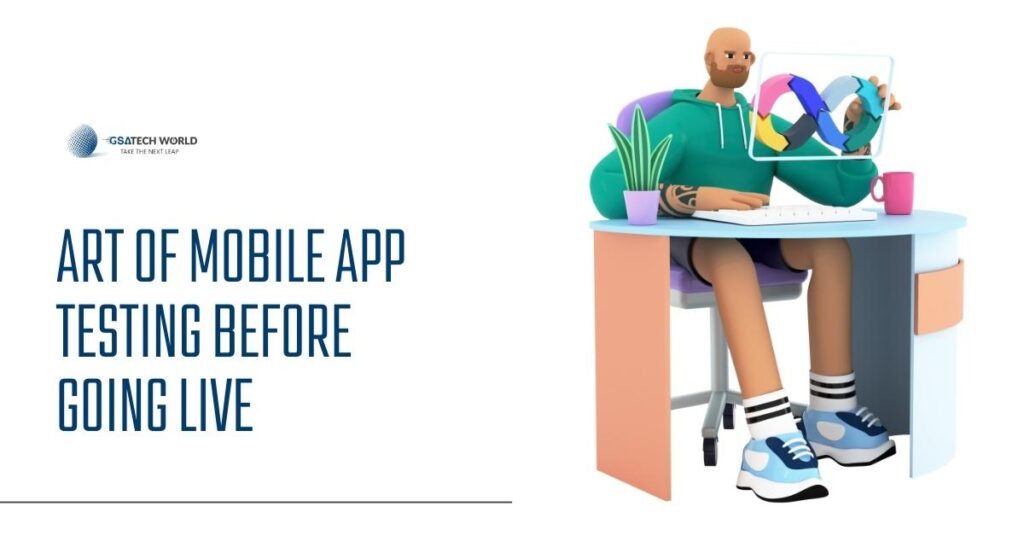Table of Contents
Introduction: Mobile App Testing
Smartphones are now almost universally available. In developed countries, there’s usually at least one family member who has a smartphone. Some people, if they can afford it, even have phones. What’s interesting is that mobile applications are being introduced to the market ranging from social media apps to simple tools like calculators or alarm clocks.
Considering these data it becomes evident how effortlessly accessible and plentiful mobile applications are for users. That’s why it’s vital to create and develop applications that can engage people after they’re installed or downloaded on their phones. One efficient strategy to achieve this aim is by stressing the quality of the application. It’s vital to test the app such that most if not all, furthermore, concentrating on app requirements testing is insufficient. Before making an application available in the market for user consumption, certain criteria must be met. Let’s go a little more into the subject of application testing.
Different Categories Of Mobile Applications
Before we go into specifics of mobile app testing, first, let’s understand various types of applications. Mobile applications can be divided into three types as follows-
Native Apps
The name indicates native programs are designed for a particular operating system. Such applications do not support other operating systems; for example, Android OS apps will only operate on Android OS devices; they will not function on iOS or Windows OS devices.
These programs must first be loaded on the devices via online shops accessible for the operating systems; for example, users can go to the ‘Play Store’ to purchase Android apps. Such apps are created by developers using native device APIs and UI, resulting in a great user experience.
Web Apps
Web apps are applications that may be accessed using the device’s different web browsers. Such apps do not need to be downloaded or installed by users. To access them, the user must enter the app URL into the browser.
These applications, unlike native apps, are not operating system specific; for example, a web app will function on both Android and iOS devices, as well as any other OS available on the market. The speed and user interface of the online app will be affected by the browser used. Furthermore, such apps take up no storage space on the device.
Hybrid Applications
Hybrid applications combine native and online apps. Hybrid applications, like native apps, may be downloaded from multiple online shops such as the ‘Play Store’ for Android and are saved in the device’s local storage. HTML5 is used to create these apps. Pages created using HTML5 run in a browser within the native app.
Testing Methods, For Mobile Applications
- Mobile application testing is quite similar to any other software testing in that, before beginning real testing of the application, testing must build a test strategy. The scope of the testing, testing strategy or technique for each sort of testing, hardware and environment requirements, and a list of automation tools (if applicable) should all be included in the test plan, among other things.
- The testing team must also develop specific test scenarios and test cases using test data.
- Furthermore, the testing team must decide whether to use automated testing because it is not practical to test every scenario with automation technologies. The team must decide which automation tools will be utilized for which sections or test cases, and scripts for those tools must be created.
- A decision on testing the apps on various mobile devices needs to be made as it won’t be possible to buy each type of mobile device and test on them due to budget constraints. The team can use emulators or simulators as required. The team can also use rented devices for testing.
Now, let’s look at the various approaches used for mobile application testing. This section also includes some important points of the checklist for each type of testing approach.
Checklist For Functional Testing Of Mobile Apps
Functionalities or features of the produced application are checked during mobile app functional testing.
- Check the field validations. Mandatory checks, character checks, length checks, and error warnings are examples of validations.
- Examine the interplay of the application’s various parts.
- Check to see if the app is compatible with different platforms/devices, operating systems, and browsers.
- Check to see if the program is compatible with different screen sizes and resolutions.
- Examine whether the program works properly in portrait and landscape modes.
- Examine the application’s functionality on multiple networks and network providers.
- Examine the application in both flying and quiet modes.
- Examine the camera’s and sensor’s specialized functions.
- Examine the location-specific functionalities.
- Check that the app works when the phone is locked and unlocked.
- When a phone call or SMS is received, verify that the application is operational.
- Examine the application’s scrolling capability.
- Examine the application’s installation and uninstalling procedures.
- If a new update is available, check the application’s update process.
- When the device RAM is filled, test the application’s functionality.
- When alerts from other apps arrive, check that the application is still operational.
- Examine battery performance while the program is active and when it is operating in the background.
- Examine the application’s data processing, such as data update and deletion.
Checklist For Usability Testing Of Mobile Apps
The major purpose of testers in mobile app usability testing is to assess whether the application is simple to use and user-friendly.
- Examine the application’s navigation across distinct modules, specifically whether the user may navigate between different displays in the correct manner.
- Examine if the overall hue of the application is consistent and attractive.
- Check to see if the font size is consistent across the program.
- In each module, check to see that the buttons and icons are all the same size.
- Examine the text of the buttons and any input/output fields to ensure that it is appropriate for the functioning of the button/field.
- Check that the content of the error messages is user-friendly (simple to read and not too severe) and consistent across all fields.
- Examine if the drop-down field items are legible.
- Examine whether the application’s flow is simple for the user.
- Check for tooltips or placeholders for activities that are difficult to grasp.
- Check the application’s speed every time the user clicks on any button or icon.
Checklist For Performance Testing Of Mobile Apps
The performance of the application under a specific load and/or stress is examined in mobile app performance testing.
- When the smartphone is charging, check the application performance.
- When the battery is low, evaluate the application’s performance.
- When the battery is fully charged, evaluate the application’s performance.
- When numerous users are logged in at the same time, evaluate the application’s performance.
- Examine the application’s performance when the user attempts to enter numerous characters at the same time.
- When the internet connection is turned off and network connectivity is poor, test the application’s functionality.
- When the internet connection fluctuates, test the application’s functionality.
- Examine the performance of the application when the internet connection is switched between high and low-speed networks.
- Examine the application’s performance when the user attempts to click on many buttons/icons at the same time.
- Examine the application’s performance when the user is present.
- In the case of a system crash or when the program is suddenly terminated, ensure that the application continues to function.
- Examine the application’s starting time.
- In the case of a system crash or when the program is suddenly terminated, ensure that the application continues to function.
- Examine the application’s starting time.
Checklist, For Security Testing Of Mobile Apps
The capacity of the program to combat any vulnerabilities is verified during mobile app security testing.
- Examine if the application has adequate rules and methods in place to authenticate platform users.
- Examine the application’s password policies to see if they are stringent. (This is especially true for banking and financial apps, as well as social networking and email apps.)
- Check to see if the program includes a mechanism for recovering lost passwords.
- Check to see whether deactivated users and users using outdated passwords are not permitted to log in.
- Check that the user’s sensitive data is not available to other platform users.
- Examine if sensitive information, such as payment information and passwords, is saved and displayed in an encrypted way.
- Check to see if the user’s data is correct.
Conclusion
It is believed that there is at least one competition for every mobile application accessible on the market. User happiness is critical for the application’s performance in the market. As a result, it is vital that the application performs optimally, and that any bugs or flaws are discovered during the quality check and testing phase of the mobile app development cycle.







